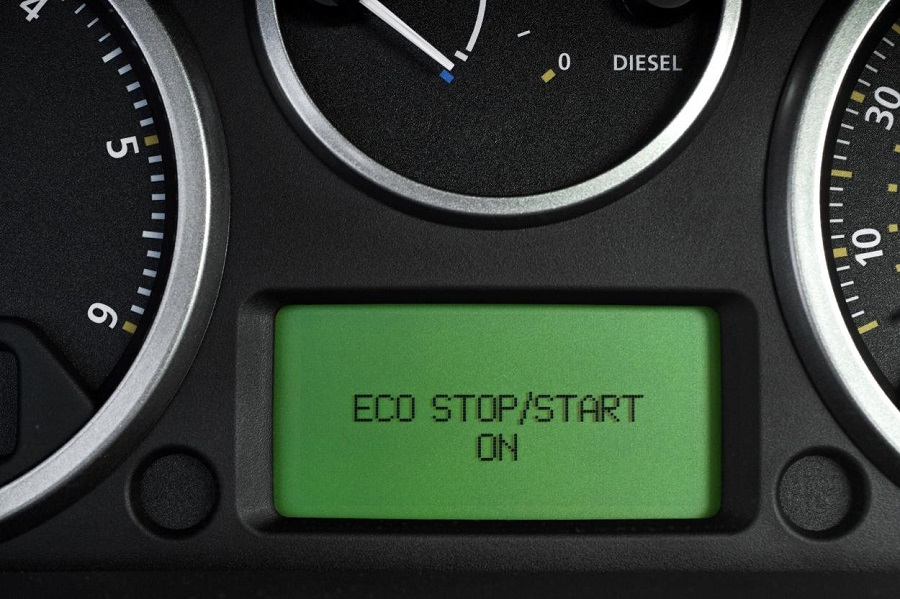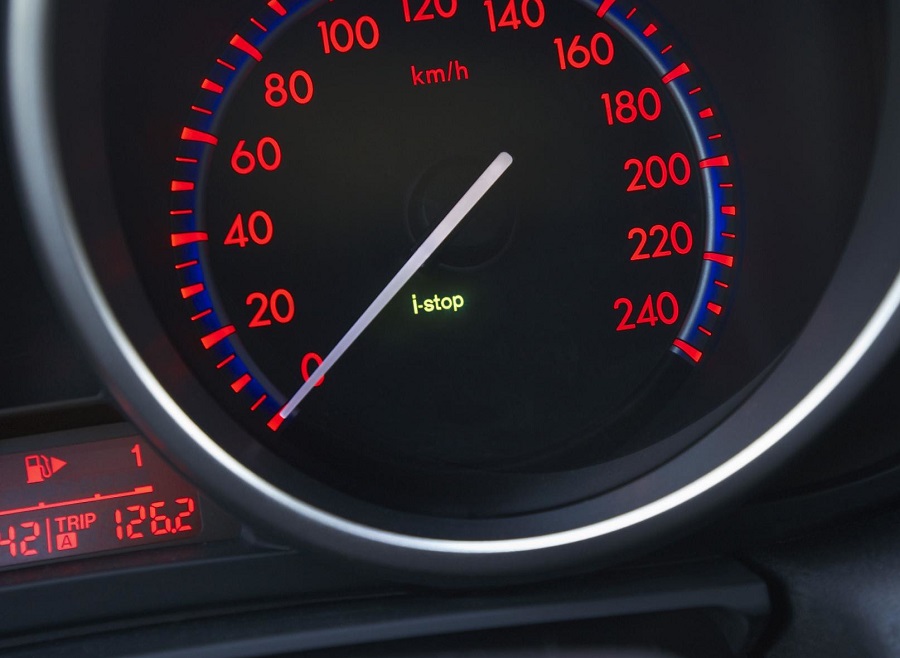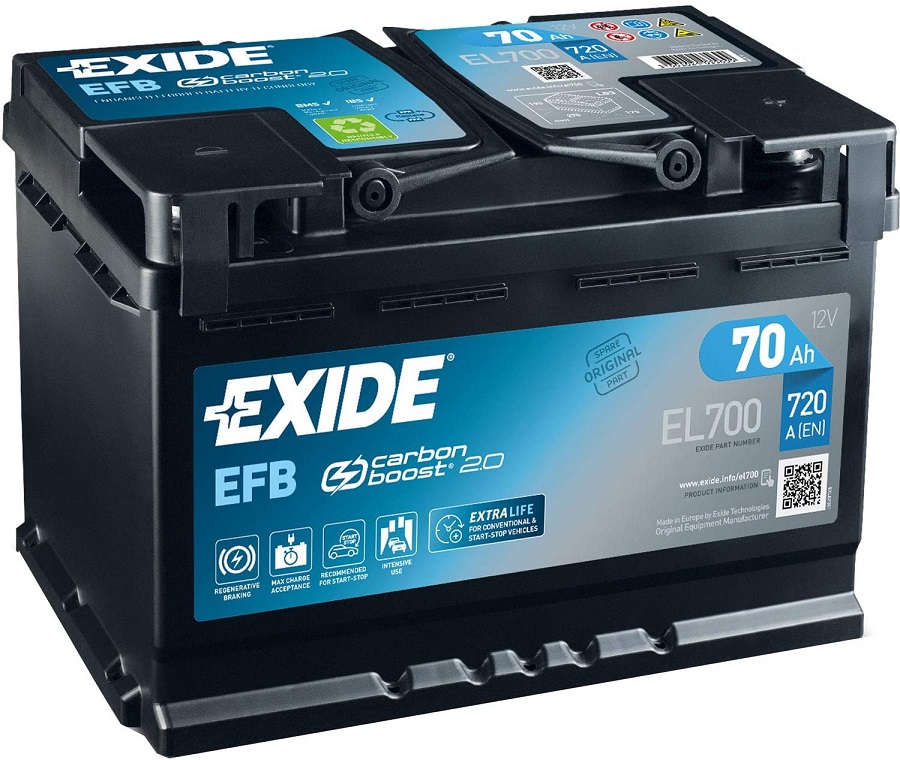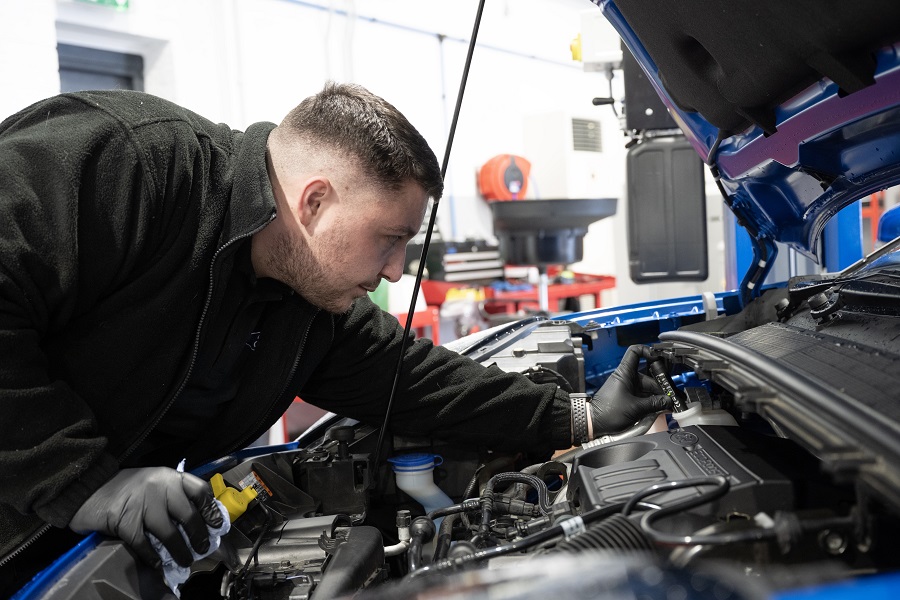Start/stop car batteries are much stronger than regular car batteries, but do you know why? Here’s how these fuel saving systems work.
Around the start of the 2010s, whenever walking along the street, it suddenly began to sound as though more and more drivers were stalling their cars as they came to a stop. Of course, it turned out that that wasn’t the case at all. Instead, this odd phenomenon could simply be put down to the emergence of new cars on the roads with stop/start systems.
This new breed of vehicle would automatically shut the engine off whenever the car came to a halt, and they’re increasingly common today. So, if you’ve ever wondered why that is, or how they work, this article will hopefully answer all those questions for you!

What is a stop/start system?
Let’s start with the basics. A stop/start system pretty much does what it says on the tin. The car’s clever ECU will detect when the vehicle has come to a stop, and if that lack of motion is accompanied by the brake pedal being engaged or the car being put into neutral, the ECU will shut off the engine.
Then, once the brake is released or the clutch or accelerator pedals are engaged, the ECU will switch the engine back on again, ready for you to continue your journey.

What is the point of stop/start systems?
Cost and emissions. Those are the two things which stop/start technology combats. Ultimately, if your car idles in traffic, it uses up unnecessary fuel and creates unnecessary emissions. That translates into costlier fuel bills for you, and more pollution for the planet, neither of which are a good thing. So, by ensuring that car engines automatically switch off when they aren’t needed to propel you along, manufacturers are making a small positive impact on your fuel expenditure and carbon footprint.

How do stop/start systems work?
In order to turn over a car’s engine, the starter uses a pinion gear to turn a large ring gear attached to the flywheel, causing the engine to spring into life. In stop/start systems, it isn’t the manual twisting of an ignition key which initiates this process, but the automatic commands of the ECU instead. Similarly, you don’t have to twist the key ‘off’ to kill the engine when you come to a stop. Again, the ECU will acknowledge that you’ve come to a halt, and cut fuel and spark accordingly.
In order to pull this off, it obviously takes some clever coding, but it also requires manufacturers to equip their cars with tougher parts. The battery in a stop/start car, for example, needs to be a lot more heavy-duty to deal with the heightened use. There are also different types of solenoid system implemented. Older stop/start cars often ran a single solenoid, but newer ones are often equipped with a pair for quicker restarts. In these so-called ‘tandem’ solenoid systems, the starter motor spins up to the speed of the flywheel in order to smoothly engage the ring gear. This is particularly useful in scenarios where you need to move off again quickly after stopping, before the engine has stopped spinning.
As a side note, it’s also worth pointing out that there are some electronic safeguards in place to ensure that the stop/start system doesn’t engage when it could have a negative impact. For example, if the car’s battery is low on charge, stop/start tech would be problematic as it takes a lot of energy to restart an engine.

Types of stop/start battery
There are two main types of battery that are up to the task of dealing with stop/start systems in cars. The first option is an Enhanced Cyclic Mat (ECM) battery or Advanced Flooded Battery (AFB) which is an improvement over the lead acid-flooded LSI batteries you’ll find in regular non-stop/start cars.
ECM/AFBs are better than LSIs almost across the board. They have a deep cycle, meaning they can use more of their energy reserves before you’ll notice a performance drop, compared to LSIs. They provide a more consistent flow of energy too.
Absorbent Glass Mat (AGM) batteries, are the most premium option however. In these batteries, the acid absorbs into fiberglass, rather than remaining free to flow. The science is rather complicated, but all you need to know is that as a result AGM batteries offer even better performance, and even better durability.

What are the downsides of stop/start systems?
Although there are upsides to owning a car with start/stop battery technology, it isn’t a faultless system. Some people are concerned about increased wear and tear, and that’s certainly an understandable worry to have. However, it must be said that stop/start cars leave the factory with much stronger parts which shouldn’t expire much quicker (if any quicker at all) than their regular counterparts, despite the increased load. However, when things do inevitably go wrong, you may find that the repair bill is a little higher than it ought to be compared to a non-stop/start car, simply due to the more advanced technologies and materials used.
Then there’s the environmental credentials. Every little helps when it comes to reducing combustion emissions, but what about before the car even rolls onto the street? Stop/start systems often require more materials to construct, adding to the initial carbon footprint of the car’s build process. So, as is the case with EVs, there are plenty of people who have doubts about the overall environmental effectiveness of stop/start systems. On the other hand, if cars are using less fuel, that means less fuel needs to be sourced to power them. It’s certainly a debate worth having.
The post Start/Stop Car Battery Explained appeared first on Fast Car.
Leia Mais.